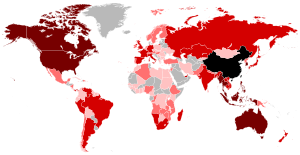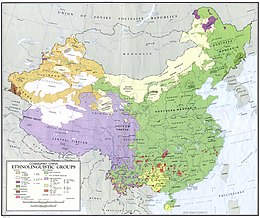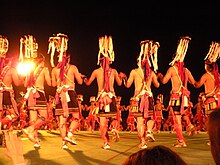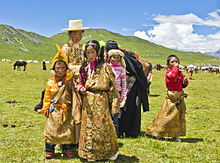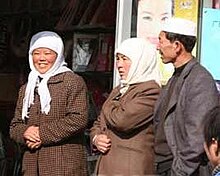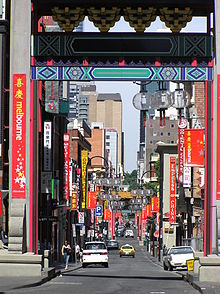Ethnic minorities in China are the non-Han population in the People's Republic of China (PRC).
Chinese nationality may refer to:

Chinese autonomous administrative divisions are associated with one or more ethnic minorities that are designated as autonomous within the People's Republic of China. These areas are recognized in the Constitution of the People's Republic of China and are nominally given a number of rights not accorded to other administrative divisions of China. For example, Tibetan minorities in autonomous regions are granted rights and support not given to the Han Chinese, such as fiscal and medical subsidies.
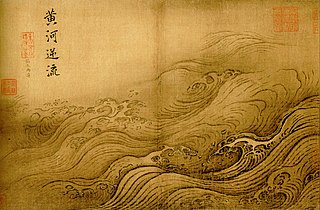
Huaxia is a historical concept representing the Chinese nation, and came from the self-awareness of a common cultural ancestry by the various confederations of pre-Qin ethnic ancestors of Han people.
The Han Chinese people can be defined into subgroups based on linguistic, cultural, ethnic, genetic, and regional features. The terminology used in Mandarin to describe the groups is: "minxi", used in mainland China or "zuqun", used in Taiwan. No Han subgroup is recognized as one of People's Republic of China's 56 official ethnic groups, in Taiwan only three subgroups, Hoklo, Hakka and Waishengren are recognized.
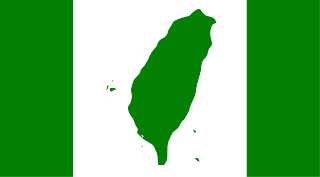
Taiwanese nationalism is a nationalist movement which asserts that the Taiwanese people are a distinct nation. Due to the complex political status of Taiwan, it is strongly linked to the Taiwan independence movement in seeking an identity separate from China. This involves the education of history, geography, and culture from a Taiwan-centric perspective, promoting native languages of Taiwan such as Taiwanese Hokkien, Hakka, and indigenous languages, as well as reforms in other aspects. Taiwanese nationalism was described as 'anti-imperialist' in that it opposed Japanese imperialism before 1945, opposed Chinese imperialism in modern times, and supported its own Taiwanese identity, which was distinct from China.
The term "Taiwanese people" has various interpretations. It may generally be considered the people living on the island of Taiwan who share a common culture, ancestry and speak Mandarin, Hokkien, Hakka, or indigenous Taiwanese languages as a mother tongue. Taiwanese people may also refer to the indigenous peoples of the areas under the control of the Government of the Republic of China since 1945, including Kinmen and Matsu Islands that collectively form its streamlined Fujian Province. However, the inhabitants of Kinmen and the Matsu Islands themselves may not consider the "Taiwanese" label to be accurate as they are a part of Fujian and not Taiwan. They have a distinctive identity from that of the Taiwanese; viewing themselves as Kinmenese or Matsunese, respectively, or as simply Chinese.

Chinese nationality law details the conditions by which a person holds nationality of the People's Republic of China (PRC). The primary law governing these requirements is the Nationality Law of the People's Republic of China, which came into force on September 10, 1980.
Racial nationalism is an ideology that advocates a racial definition of national identity. Racial nationalism seeks to preserve "racial purity" of a nation through policies such as banning race mixing and the immigration of other races. To create a justification for such policies, racial nationalism often promotes eugenics, and advocates political and legislative solutions based on eugenic and other racial theories.
Waishengren, sometimes called mainlanders, are a group of migrants who arrived in Taiwan from mainland China between the Japanese surrender at the end of World War II in 1945, and Kuomintang retreat and the end of the Chinese Civil War in 1949. They came from various regions of mainland China and spanned multiple social classes. The term is often seen in contrast with benshengren, which refers to Hoklo and Hakka people in Taiwan who arrived prior to 1945 who had lived under Japanese rule. The term excludes other ethnic Chinese immigrants and later immigrants from mainland China.

The population of Taiwan is approximately 23.35 million as of April 2023.
Taiwanese Australians are Australian citizens or permanent residents who carry full or partial ancestry from the East Asian island country of Taiwan or from preceding Taiwanese regimes.
Benshengren, are ethnic Hoklo or Hakka Taiwanese nationals who settled on the island prior to or during the Japanese colonization of Taiwan. Its usage is to differentiate the different culture, customs, and political sentiments within contemporary Taiwan between those who lived through World War II on the island and later migrants from Mainland China, who are known as Waishengren. Hoklo and Hakka people who migrated to Taiwan after 1945, especially those who migrated with the retreat of the Nationalist-Led Chinese Government to Taiwan in 1949 are not included in this term.
Hongkongers, Hong Kongers, Hong Kongese, Hongkongese, Hong Kong citizens and Hong Kong people are demonyms that refer to the resident of Hong Kong, although they may also refer to others who were born and/or raised in the territory.

Zhonghua minzu is a political term in modern Chinese nationalism related to the concepts of nation-building, ethnicity, and race in the Chinese nationality.
Han Taiwanese, Taiwanese Han, Taiwanese Han Chinese, or Han Chinese are Taiwanese people of full or partial ethnic Han ancestry. According to the Executive Yuan of Taiwan, they comprise 95 to 97 percent of the Taiwanese population, which also includes Austronesians and other non-Han people. Major waves of Han immigration occurred since the 17th century to the end of Chinese Civil War in 1949, with the exception of the Japanese colonial period (1895–1945). Han Taiwanese mainly speak three languages of Chinese: Mandarin, Hokkien and Hakka.
During the martial law period in Taiwan, a Mandarin monolingual policy was implemented in Taiwan by the Kuomintang. The policy was formulated as a political goal to unite the island. However, the demotion of prior local languages into "dialects" across cultural and educational landscapes resulted in a pushback of the policy and eventually rescinded as Taiwan democratized.
Local ethnic nationalism, simply local nationalism or local ethnic chauvinism refers to a form of nationalism that divides China (PRC) by refusing to unite with the Han Chinese by focusing only on the 'national/ethnic interests' (民族利益) of ethnic minorities in China.
